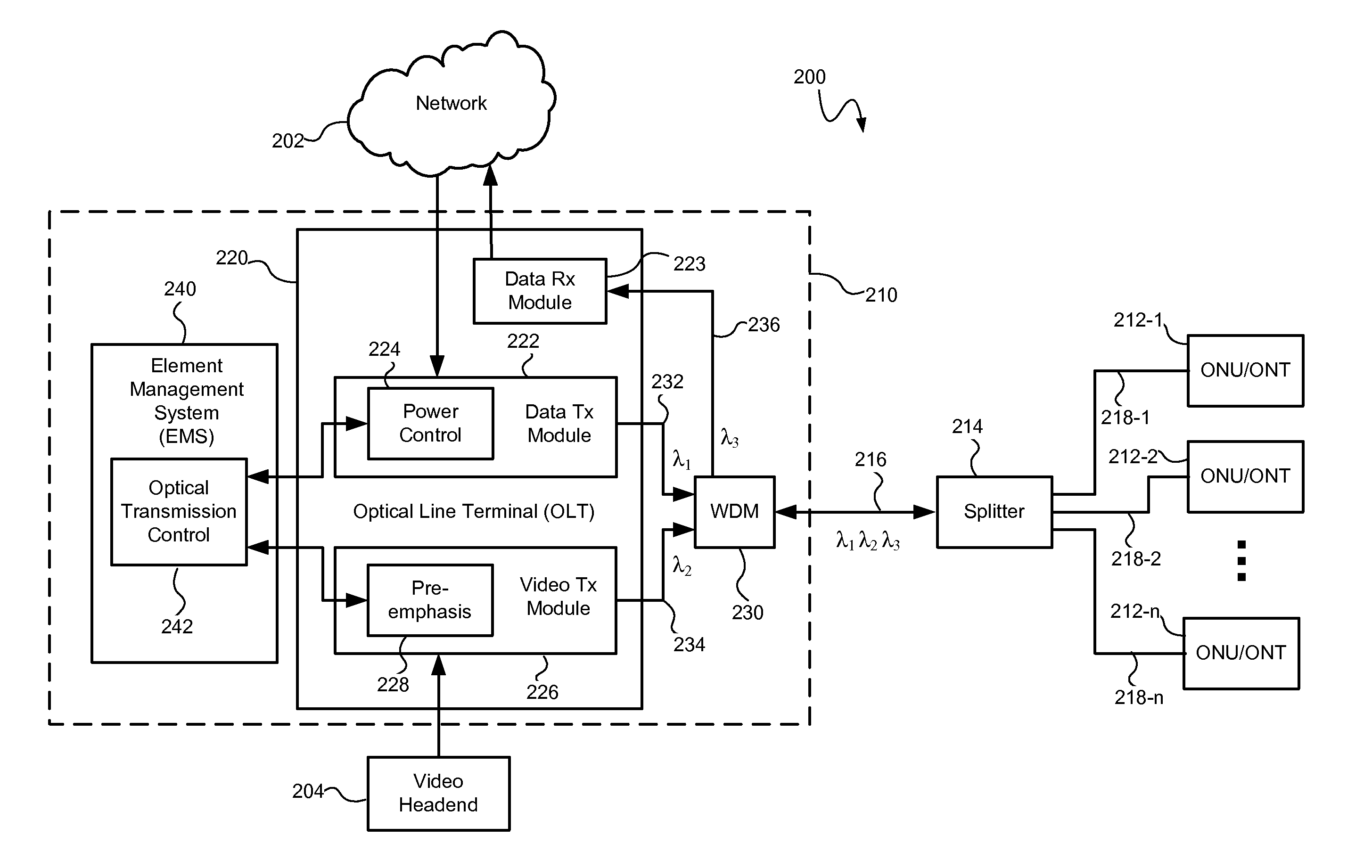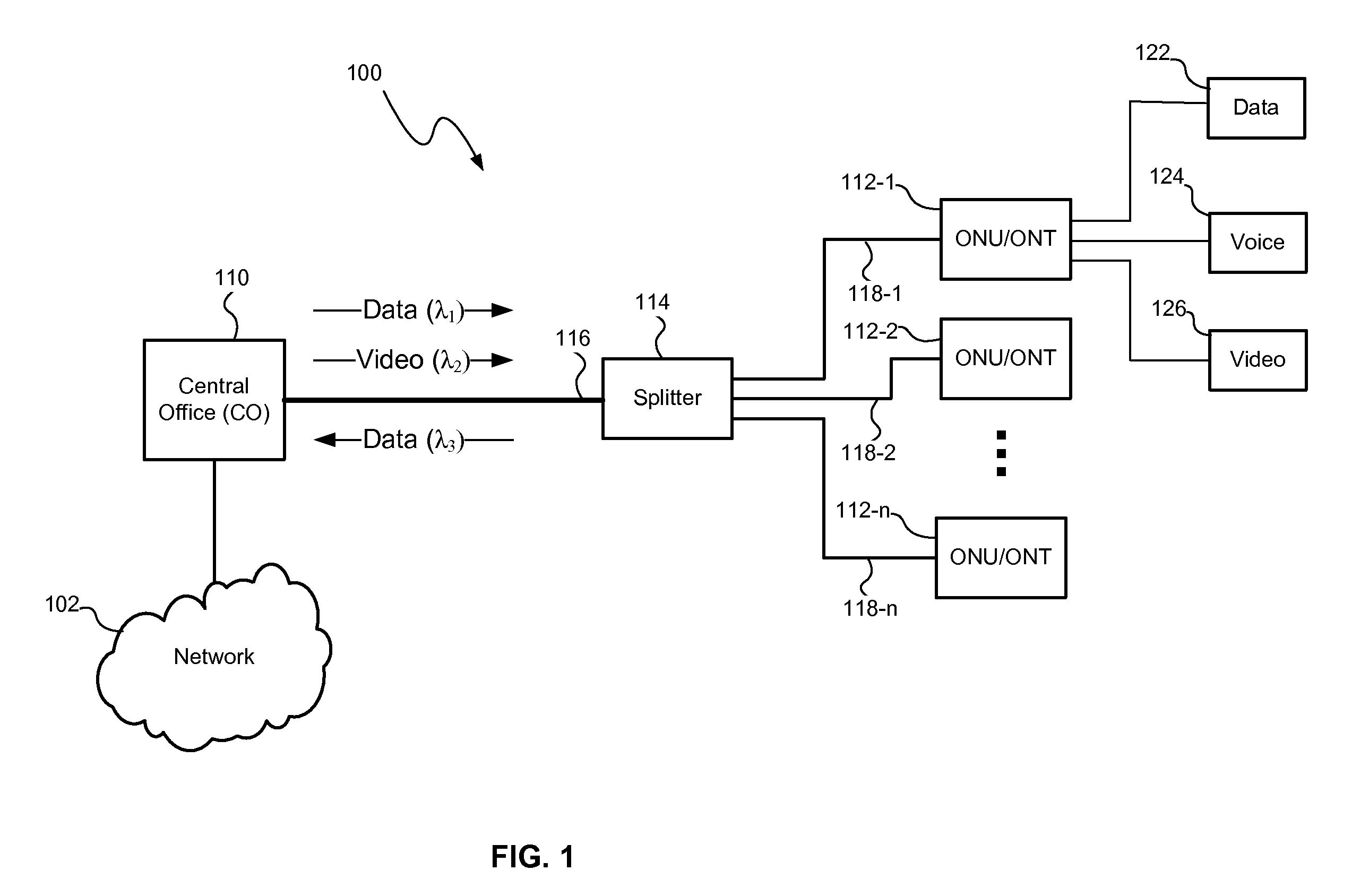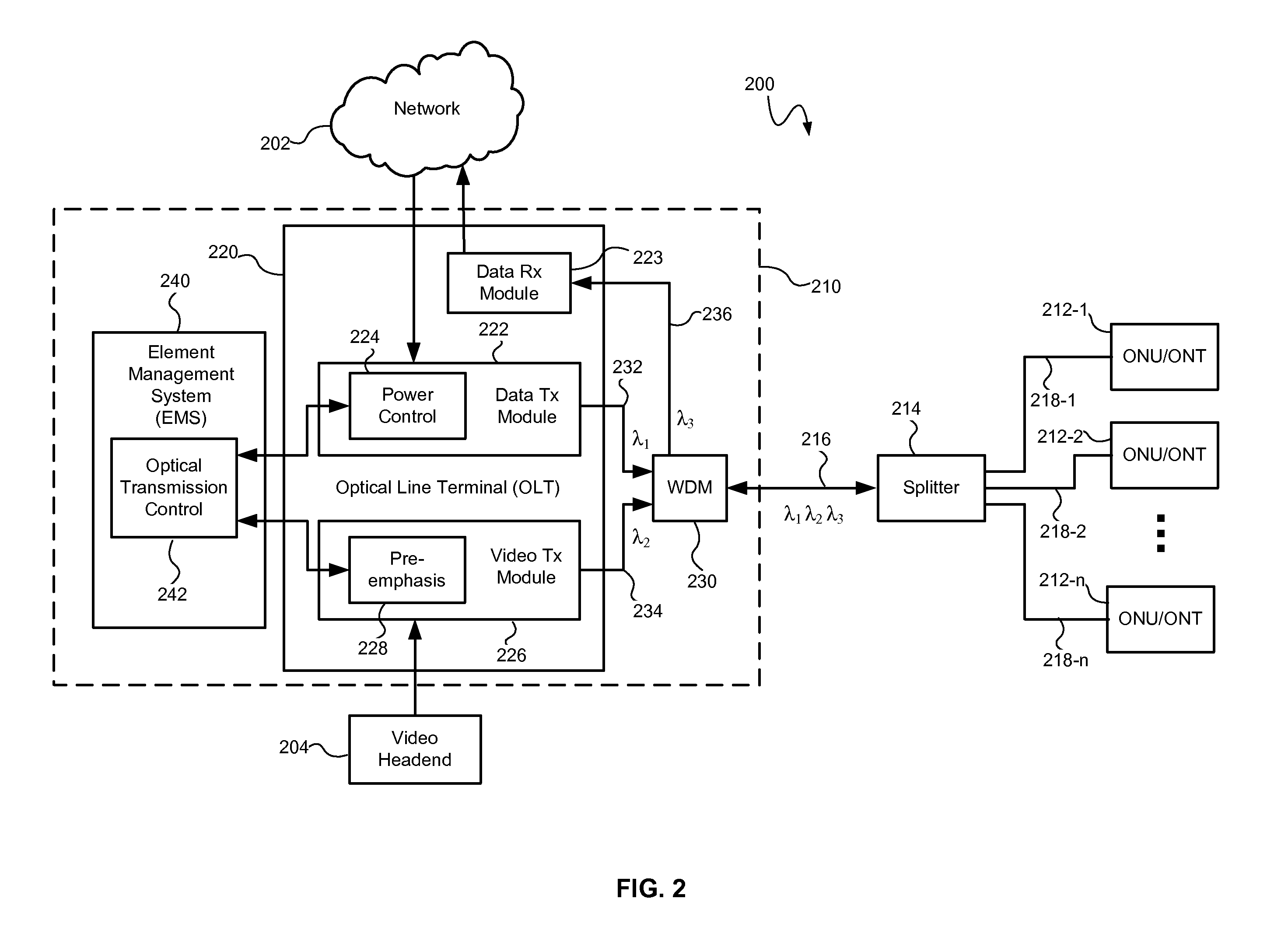Controlling optical signal transmission to reduce optical signal degradation
- Summary
- Abstract
- Description
- Claims
- Application Information
AI Technical Summary
Problems solved by technology
Method used
Image
Examples
Embodiment Construction
[0019] An optical transmission system and method may control optical signal transmission in an optical network to reduce degradation of one or more optical signals traveling over the same optical waveguide. In particular, optical signal transmission may be controlled to reduce carrier to noise ratio (CNR) degradation of an optical signal resulting from the effects of stimulated Raman scattering (SRS) and / or double Rayleigh backscattering (DRBS). The CNR degradation may be reduced by controlling transmission of one or more of a plurality of optical signals in the optical network based on various parameters affecting the contribution to CNR degradation by SRS and / or DRBS and affecting the performance of the optical transmission system. The parameters may include the optical wavelengths and power levels of the optical signals and the length of the optical transmission waveguides (e.g., the optical fibers). As will be described in greater detail below, optical signal transmission may be...
PUM
 Login to View More
Login to View More Abstract
Description
Claims
Application Information
 Login to View More
Login to View More - R&D
- Intellectual Property
- Life Sciences
- Materials
- Tech Scout
- Unparalleled Data Quality
- Higher Quality Content
- 60% Fewer Hallucinations
Browse by: Latest US Patents, China's latest patents, Technical Efficacy Thesaurus, Application Domain, Technology Topic, Popular Technical Reports.
© 2025 PatSnap. All rights reserved.Legal|Privacy policy|Modern Slavery Act Transparency Statement|Sitemap|About US| Contact US: help@patsnap.com



